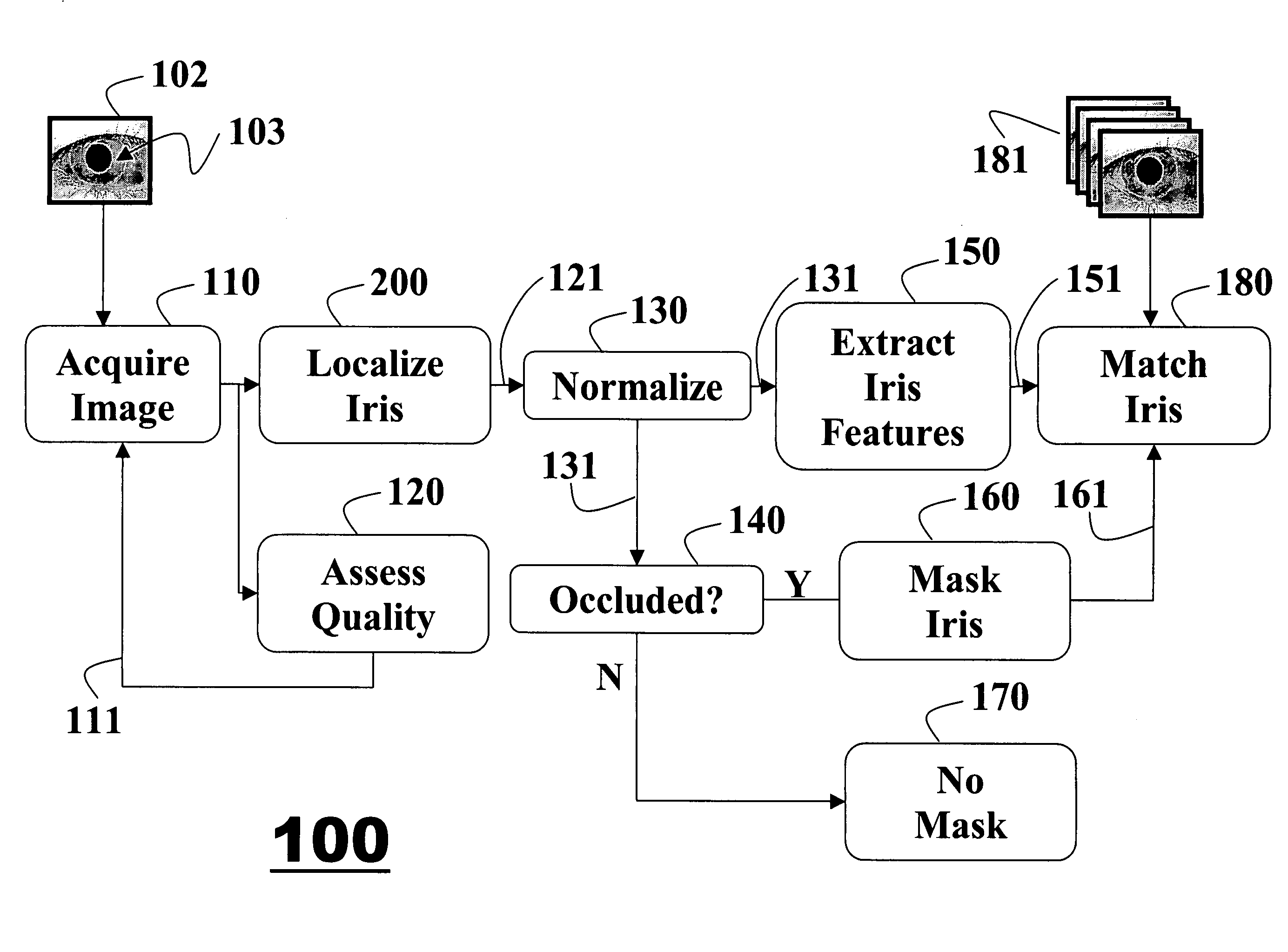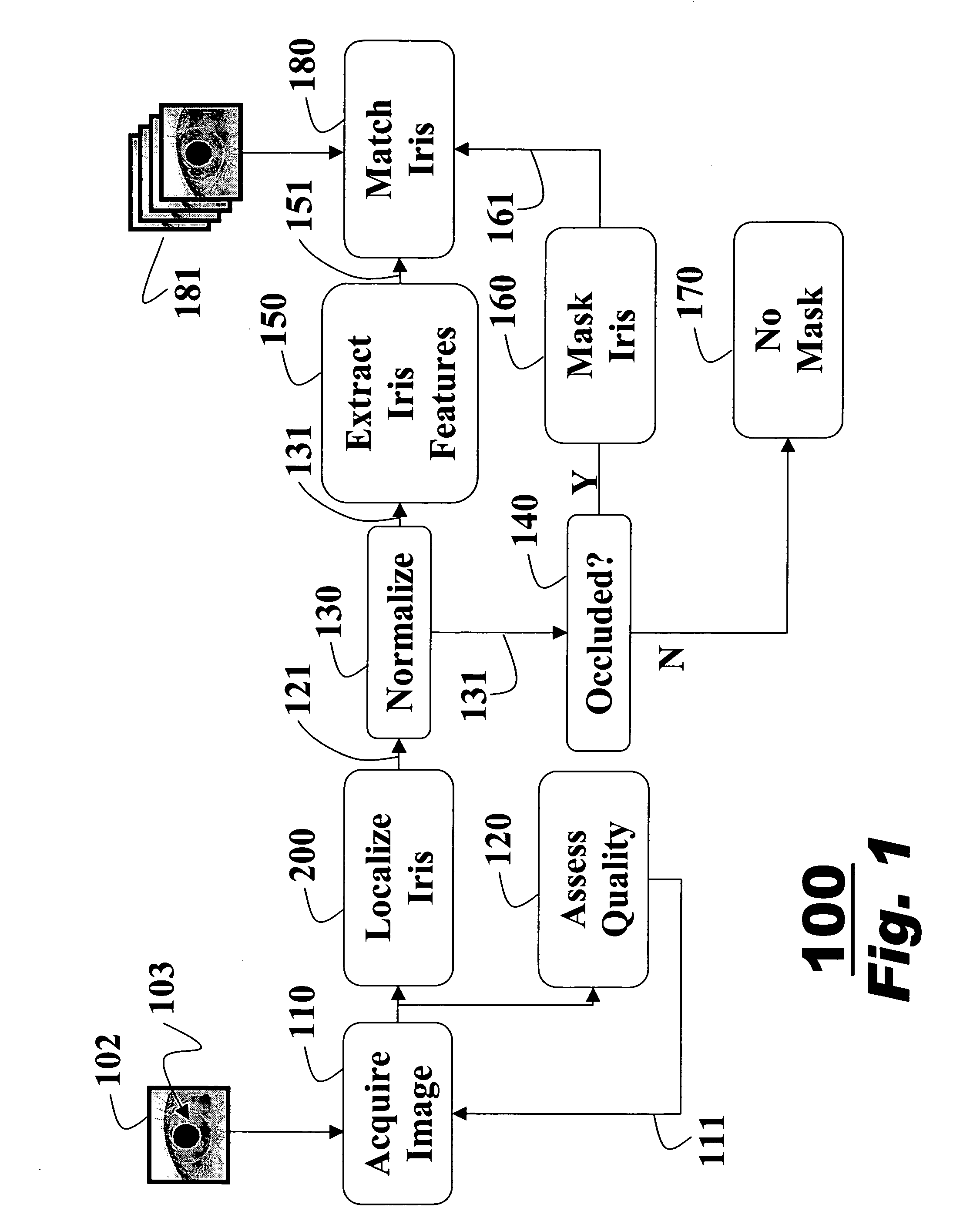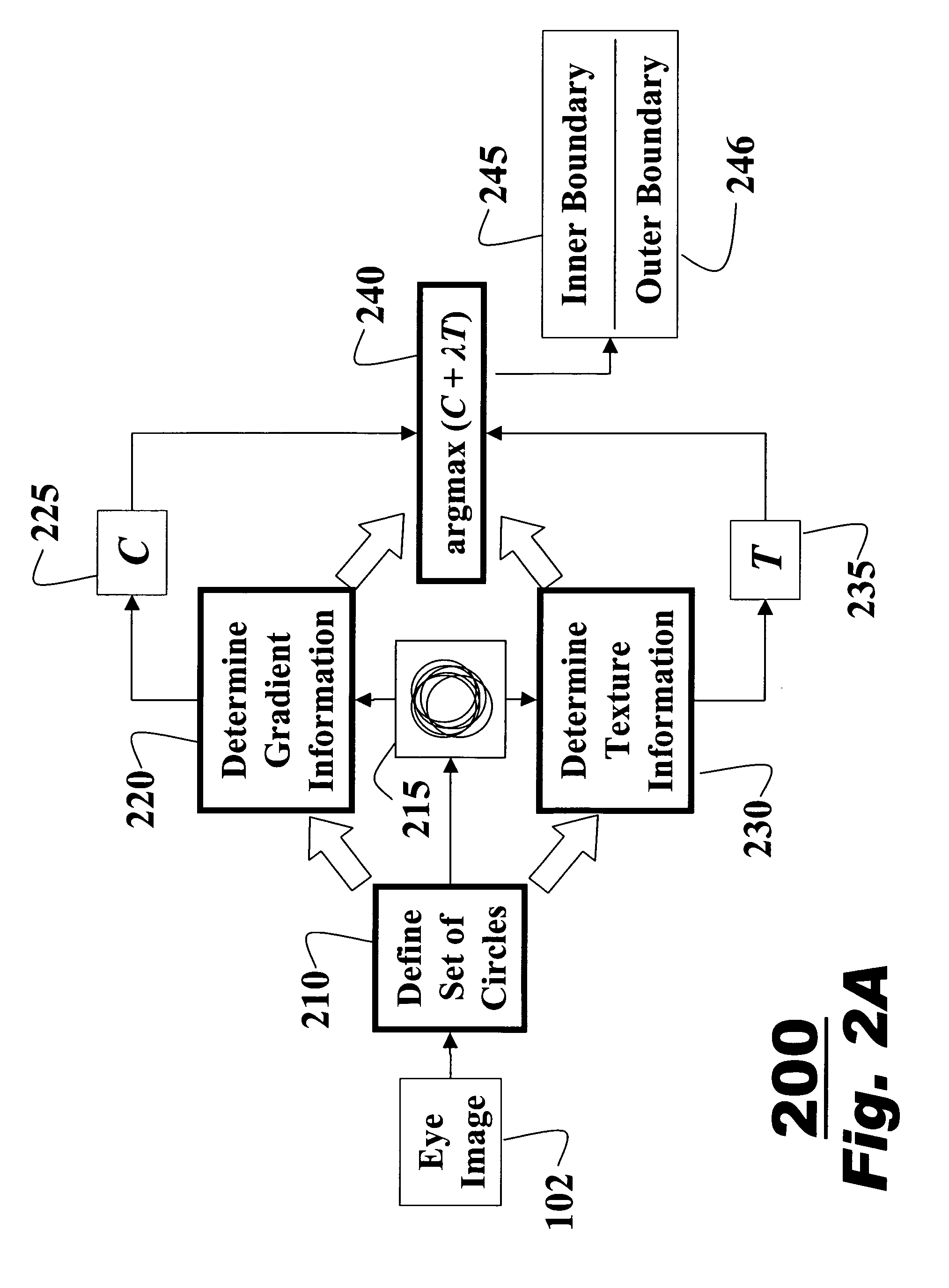Method for extracting features of irises in images using difference of sum filters
a technology of iris and image, applied in the field of processing and recognizing biometric parameters, can solve the problems of large mask, no of the above methods use texture in the image for iris boundary extraction, and use thresholds during edge detection, so as to improve the accuracy of iris boundary detection
- Summary
- Abstract
- Description
- Claims
- Application Information
AI Technical Summary
Benefits of technology
Problems solved by technology
Method used
Image
Examples
Embodiment Construction
[0053]FIG. 1 shows a method and system 100 for matching irises in images according to an embodiment of our invention. Iris localization can begin with acquiring 110 an image 102 of an eye. The eye includes an iris 103. Quality assessment 120 determines whether the image 102 is usable. If the eye image has a sufficient quality, then the system localizes 200 the iris 103 in the image, otherwise 111 another image is acquired 110. The localized image of the iris (iris image) 121 is normalized 130 to a rectangular image 131, called an ‘unwrapped’ image, having a predefined pixel configuration. A determination 140 is made to detect eyelid occlusions in the unwrapped iris image 131. If true, then a mask 161 is generated 160 and associated with the unwrapped image 131. If false, then there is no mask 170. Iris features 151 are extracted 150 from the unwrapped images and used, along with the mask 161, if any, for iris matching 180 when compared to feature vectors generated for a stored libra...
PUM
 Login to View More
Login to View More Abstract
Description
Claims
Application Information
 Login to View More
Login to View More - R&D
- Intellectual Property
- Life Sciences
- Materials
- Tech Scout
- Unparalleled Data Quality
- Higher Quality Content
- 60% Fewer Hallucinations
Browse by: Latest US Patents, China's latest patents, Technical Efficacy Thesaurus, Application Domain, Technology Topic, Popular Technical Reports.
© 2025 PatSnap. All rights reserved.Legal|Privacy policy|Modern Slavery Act Transparency Statement|Sitemap|About US| Contact US: help@patsnap.com



